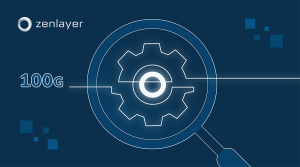Quality of Service (QoS) is one of those tricky terms that has different meanings depending on which industry you’re referring to. In most industries, QoS describes – obviously enough – the quality of service being provided. In this article, however, we’ll be talking about the kind of QoS that refers to how to provide a certain quality of service.
What is QoS?
In computer networking, Quality of Service (QoS) is the ability to guarantee a certain level of performance when transmitting data based on certain criteria. What the criteria is varies based on use case. For example, a business using many documents may choose to prioritize connections to Office 365 while a global business may need to prioritize data being sent to and from Europe. The data may even be prioritized within an application; for example, many streaming services prioritize audio over video as viewers find choppy sound more distracting than choppy visuals.
Think of QoS as a highway with multiple lanes for different kinds of traffic. Important traffic goes in the fastest lane, while other traffic that isn’t time sensitive or can be resent as needed is directed to other lanes. Depending on the implementation, Quality of Service can be used not only to speed up data transmissions but also to guarantee low or zero levels of jitter and packet loss (data transmission errors). It’s truly VIP service for data.
Why do businesses use QoS?
QoS is incredibly versatile. Any business with more than one digital component – which is nearly every business in the 21st century – has at least one use case for QoS, whether it’s prioritizing important software or guaranteeing uninterrupted data transmissions. The software may be Salesforce, Zoom, Netflix (entertainment journalists have business needs too!) or anything else the company relies on for daily operations. Data transmissions can be as varied as player vs player actions in an online game or controlling machinery in a factory.
QoS is especially popular for applications in which data must arrive in order. For example, when downloading a file any data packets lost in transmission can easily be retransmitted and only cause a small delay. A live video stream, however, has no use for retransmitted data because it is happening, well, live. If the data doesn’t arrive on time it’s too late. Another extremely useful applications include cases in which connections need ultra-low latency for near-instantaneous reactions, such as autonomous cars, financial system alerts, or remote surgery.
How is QoS implemented?
QoS is implemented with routers and switches in the network. As they receive data, they route it according to the rules with which they’ve been configured. Choosing the best route for data is actually just how normal routers and switches work, but how well the devices can choose the best routes varies with hardware capabilities and configuration. To implement effective QoS, all routers and switches the data passes through during transmission must have the same routing rules and capabilities.
How can QoS rules be customized?
QoS rules can be customized in nearly any way imaginable, given the right hardware. Assuming your implementation uses layer-3 switches and is at least partly on a privately owned network, rules can be set by any combination of application, region, IP address, network type, and/or data type. For example, you could choose to prioritize connections to AWS for users located in China, accelerate access to tax services between January and April, or even give a specific VIP customer ultra-low latency when playing online games.
Does Zenlayer implement QoS?
Zenlayer offers customizable QoS via both Cloud Networking and Cloud WAN. Because Zenlayer services use our global, private network, customers can retain complete control over their traffic – no concerns about public internet congestion or a bottleneck switch. Additionally, because the Zenlayer network is private and the rules so customizable, your data can be securely encrypted and still enjoy granular QoS prioritization.
All Cloud Networking and Cloud WAN nodes use high-performance layer-3 switches for maximum speed and flexibility. Our expert representatives will help you select and implement QoS rules that make sense for your business, or you can take advantage of our rich API support for fine-tuned customization.







